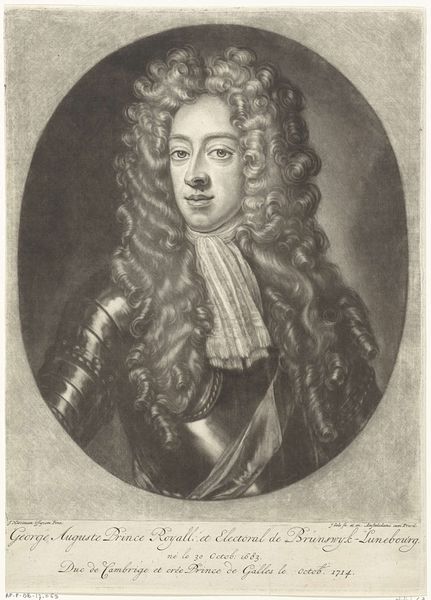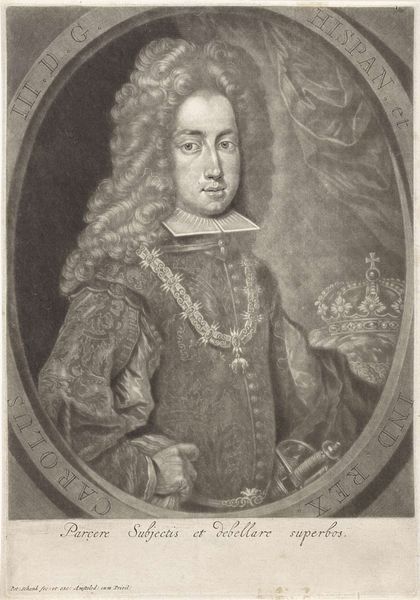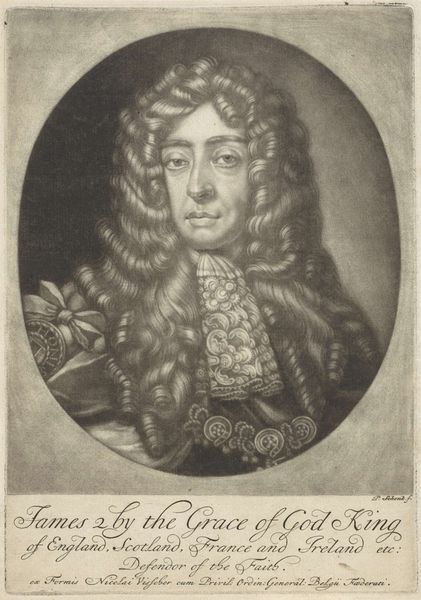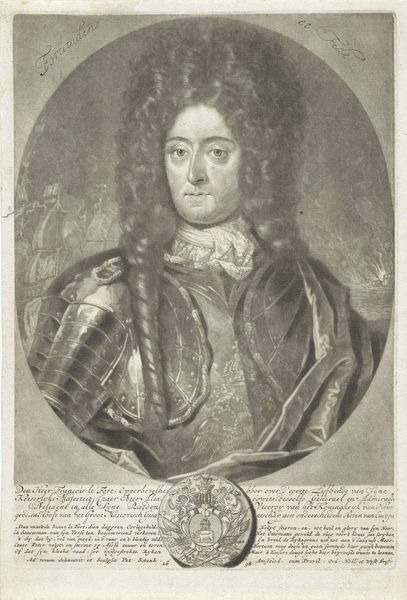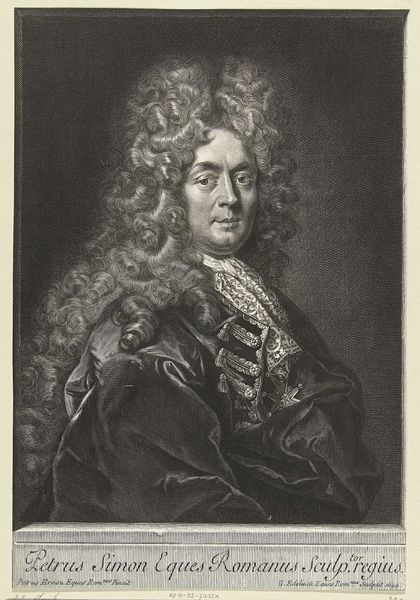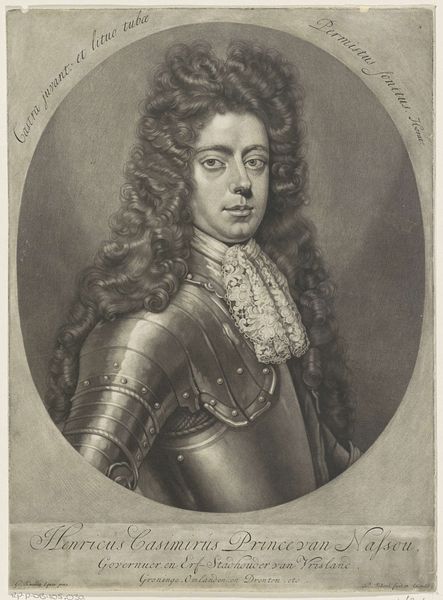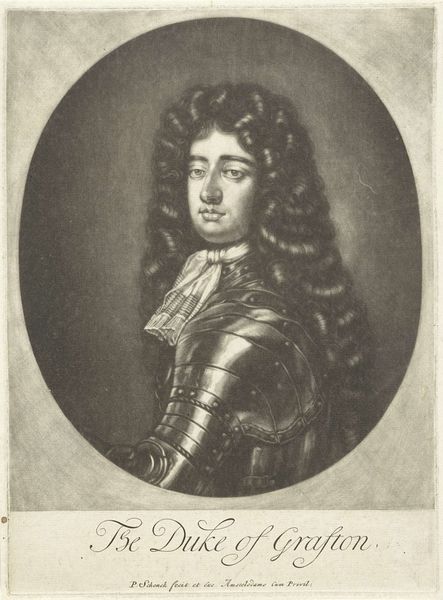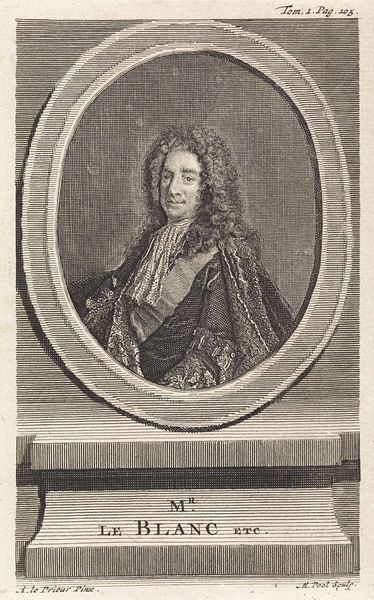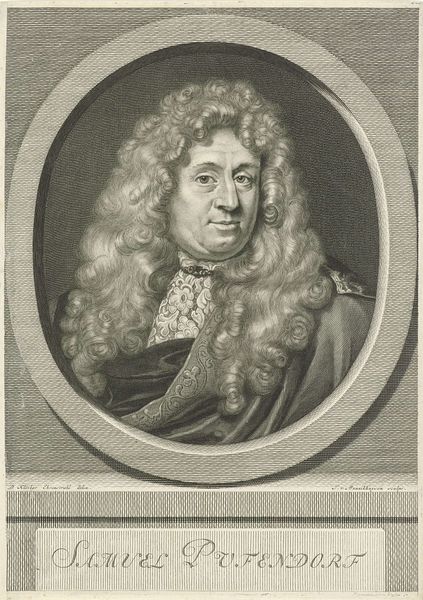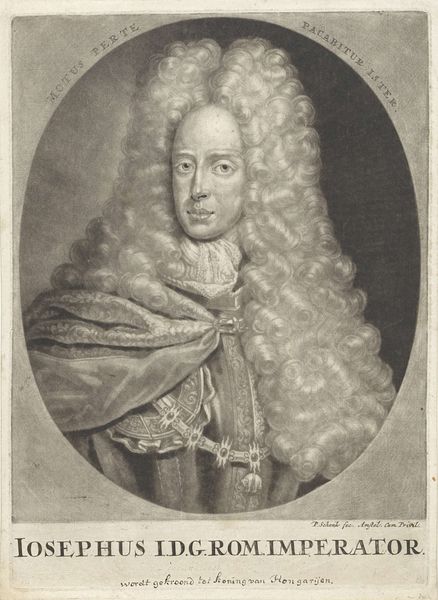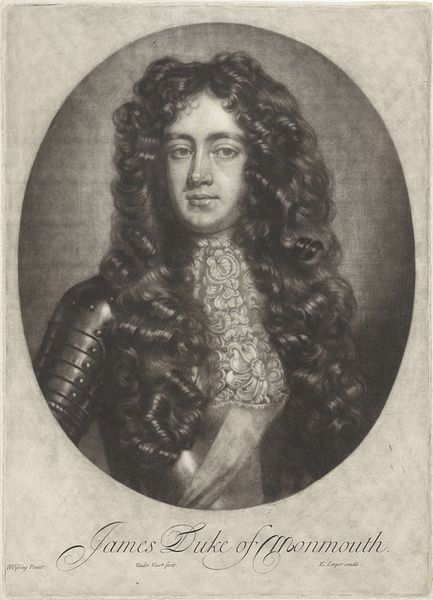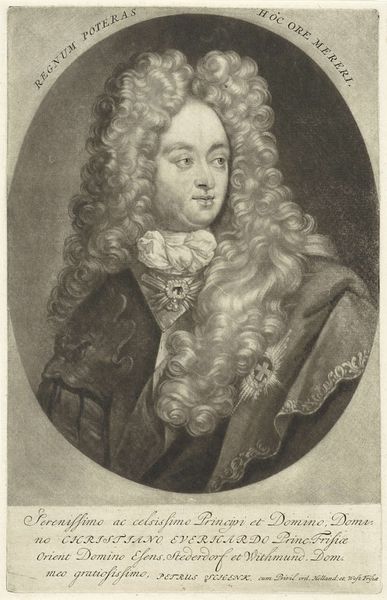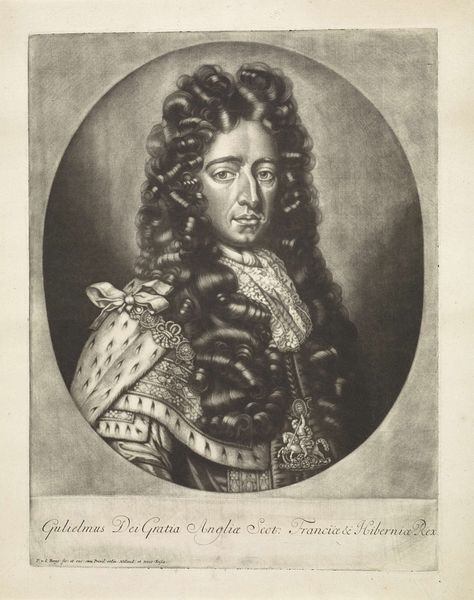
drawing, print, engraving
#
portrait
#
drawing
#
baroque
# print
#
charcoal drawing
#
figuration
#
pencil drawing
#
line
#
portrait drawing
#
academic-art
#
engraving
Dimensions: height 244 mm, width 182 mm
Copyright: Rijks Museum: Open Domain
Curator: Good day. Let's have a look at "Portret van Karl von Biorn Bonde," a piece rendered somewhere between 1670 and 1713 by Pieter Schenk, housed right here in the Rijksmuseum. What captures your attention initially? Editor: Wow, the sheer… wig-ness of it all! It’s a gravity-defying, swirling vortex of hair that seems to eclipse the man himself. The whole composition feels theatrical. Almost comical. Curator: Absolutely, the baroque era reveled in excess. But look closer. There is an intriguing tension here. The man is dwarfed by his status symbols, but that also indicates power. And the face... is he resigned? Wary? Editor: I see it! There is definitely something in the eyes – a kind of melancholic acknowledgement. Perhaps trapped by the weight of his own symbolism. Is the luxurious fur maybe alluding to something deeper than just showing off, like animal instincts tamed by society, or, perhaps the inherent warmth and comfort derived from positions of power? Curator: Precisely. Iconographically, fur cloaks have often signaled wealth, status and influence. The lace at his collar and that wonderfully ornamented coat all double down on these associations. And that almost self-conscious stare hints at the price such symbols exact on the individual. Editor: What do we make of that shelf with objects slightly to his left? It's easy to miss against the detail of the rest of the portrait, but seems pretty symbolic! Curator: I’m glad you noticed it. Often, in portraiture, such details are meant to illuminate something about the sitter's character, interests or profession. Though with how faintly its depicted, it could reference ancestral heraldry, or the artifacts of a scholarly pursuit. Something distinctly personal… hidden in plain sight. Editor: It is amazing how much this tiny image manages to hold! To think of the person hidden behind the symbolism of wealth, status, and carefully constructed self-image feels almost tragic, if relatable, even now. Curator: Indeed, sometimes the most powerful portraits are not celebrations, but rather examinations of the human condition within very specific constraints. A poignant observation that continues to resonate, centuries later.
Comments
No comments
Be the first to comment and join the conversation on the ultimate creative platform.
